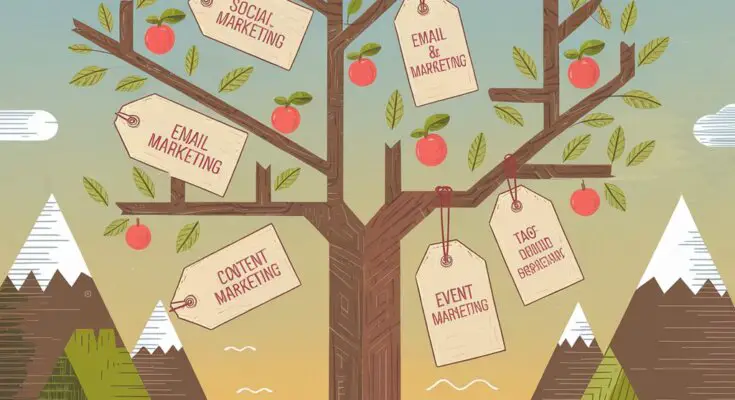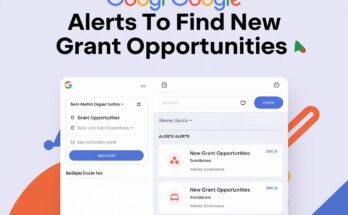Benefits of a strong marketing plan can’t be overemphasized. In the world of nonprofits, having a strong marketing plan is not just a luxury—it’s a necessity.
Whether you’re a small community group or a large charitable organization, a well-crafted marketing strategy can transform your mission into widespread awareness, increased fundraising, and lasting engagement with your supporters.
Let’s dive into why a robust marketing plan is essential for nonprofits and how you can implement one to propel your organization forward.
Why Every Nonprofit Needs a Marketing Plan
Imagine trying to navigate a ship without a map. That’s what operating a nonprofit without a marketing plan is like.
A marketing plan serves as your roadmap, guiding your efforts to reach the right people, at the right time, with the right message. It helps you allocate resources efficiently, measure your success, and adapt to changing circumstances.
>>>>>>>>Click here to download a free marketing plan >>>>>>>>>>>>
1. Increased Awareness
One of the primary benefits of a strong marketing plan is increased awareness. Nonprofits thrive on visibility. The more people know about your cause, the more support you can garner.
Practical Example: Consider a local animal shelter that wants to increase its visibility. By developing a marketing plan that includes social media campaigns, local media partnerships, and community events, the shelter can reach a broader audience. Highlighting success stories of animals adopted and the shelter’s impact can attract more volunteers and donors.
2. Enhanced Fundraising
Effective fundraising is the lifeblood of any nonprofit. A strategic marketing plan can significantly boost your fundraising efforts by identifying and targeting potential donors more effectively.
Practical Example: A nonprofit focused on education might use email marketing campaigns to reach out to past donors with personalized messages about how their contributions have made a difference. Incorporating compelling visuals and clear calls to action can encourage repeat donations and larger contributions.
3. Improved Engagement
Engagement goes beyond just raising funds; it’s about building a community around your cause. A strong marketing plan fosters engagement by creating meaningful interactions with your audience.
Practical Example: A nonprofit environmental organization can engage its supporters through interactive content like webinars, social media challenges, and volunteer opportunities. By regularly updating followers with progress reports and success stories, the organization keeps its community invested and active.
4. Strategic Direction
A well-defined marketing plan provides your nonprofit with strategic direction. It ensures that all your marketing efforts are aligned with your overall mission and goals.
Practical Example: If your nonprofit aims to provide clean water to underserved communities, your marketing plan should focus on highlighting the importance of clean water, showcasing projects, and outlining clear steps for supporters to get involved. This alignment ensures consistency in your messaging and helps in achieving your objectives efficiently.
5. Greater Visibility
Visibility is crucial for attracting not only donors and volunteers but also partnerships and media attention. A strong marketing plan ensures your nonprofit stands out in a crowded field.
Practical Example: A cultural heritage nonprofit can increase its visibility by leveraging local media, participating in community festivals, and utilizing SEO strategies on their website. By consistently promoting their events and achievements, they become a recognized name in their field.
A Story of Success: How Hope Community Center Transformed Through Marketing
Let me share a story about Hope Community Center, a nonprofit dedicated to providing resources and support to underprivileged families. A few years ago, Hope was struggling to reach its fundraising goals and engage the community effectively. They realized that their lack of a cohesive marketing plan was holding them back.
Hope decided to invest in developing a comprehensive marketing strategy. They started by redefining their brand message to clearly communicate their mission and impact. They revamped their website to make it more user-friendly and informative. Social media became a cornerstone of their strategy, where they shared success stories, upcoming events, and volunteer opportunities.
Additionally, Hope launched an email newsletter to keep their supporters informed and engaged. They organized community events that not only raised funds but also brought people together around their cause. By tracking their marketing efforts, they could see which strategies were most effective and adjust accordingly.
Within a year, Hope Community Center saw a 50% increase in donations, a 30% growth in their volunteer base, and significantly higher community engagement. Their story is a testament to the transformative power of a strong marketing plan for nonprofits.
Key Components of a Strong Marketing Plan
To reap these benefits, your nonprofit’s marketing plan should include several key components:
a) Clear Goals and Objectives
Start by defining what you want to achieve. Are you aiming to increase donations, raise awareness, or boost volunteer participation? Clear goals help in crafting targeted strategies.
Practical Example: If your goal is to increase donations by 20% over the next year, your marketing plan should outline specific tactics such as fundraising events, donor recognition programs, and targeted advertising campaigns.
2. Understanding Your Audience
Know who your supporters are and what motivates them. Understanding your audience helps in creating messages that resonate and drive action.
Practical Example: Conduct surveys or focus groups to gather insights about your supporters’ interests, preferences, and motivations. Use this data to tailor your marketing messages and choose the right channels to reach them effectively.
3. Compelling Messaging
Your message should clearly convey your mission, the impact of your work, and the benefits of supporting your cause. It should be consistent across all platforms.
Practical Example: Develop a tagline that encapsulates your mission, such as “Empowering Education for All.” Use this tagline in your marketing materials, social media posts, and fundraising campaigns to create a unified and memorable message.
4. Multi-Channel Approach
Utilize various channels to reach your audience, including social media, email, your website, and traditional media. A diverse approach ensures you connect with supporters where they are.
Practical Example: Use social media platforms like Facebook and Instagram for engaging visuals and updates, email newsletters for detailed information and calls to action, and your website as a hub for all information and resources related to your nonprofit.
5. Monitoring and Evaluation
Regularly track the performance of your marketing efforts. Use analytics tools to measure success and identify areas for improvement.
Practical Example: Set up Google Analytics on your website to monitor traffic and user behavior. Track engagement metrics on social media platforms and analyze email campaign open and click-through rates to assess what’s working and what needs adjustment.
Implementing Your Marketing Plan
Creating a marketing plan is one thing, but implementing it effectively is another. Here are some steps to ensure your plan is executed successfully:
a) Allocate Resources Wisely
Determine your budget and allocate resources to different marketing activities based on their potential impact. Prioritize high-impact strategies that align with your goals.
Practical Example: If social media has proven to be an effective channel for engagement, allocate more of your budget to creating high-quality content and running targeted ad campaigns on those platforms.
b) Build a Strong Team
Ensure you have the right team in place to execute your marketing plan. This might include hiring a dedicated marketing coordinator or partnering with volunteers who have relevant skills.
Practical Example: Recruit a volunteer with experience in graphic design to create visually appealing marketing materials, or partner with a local college’s marketing department for internship opportunities.
c) Stay Flexible
Be prepared to adapt your marketing plan based on what’s working and what’s not. Flexibility allows you to respond to changing circumstances and optimize your efforts.
Practical Example: If a particular social media campaign isn’t generating the expected engagement, be ready to tweak your approach—perhaps by changing the content format or targeting a different audience segment.
Leveraging Technology for Better Marketing
In today’s digital age, technology plays a crucial role in enhancing your marketing efforts. Here are some ways to leverage technology effectively:
a) Social Media Management Tools
Tools like Hootsuite or Buffer can help you schedule posts, track engagement, and manage multiple social media accounts efficiently.
Practical Example: Use Hootsuite to plan and schedule your posts for the week, monitor mentions of your nonprofit, and analyze which types of content receive the most engagement.
b) Email Marketing Platforms
Platforms like Mailchimp or Constant Contact make it easy to create, send, and track email campaigns.
Practical Example: Set up automated email sequences for new donors, welcoming them to your community and providing them with information on how their contributions are making an impact.
c) CRM Systems
Customer Relationship Management (CRM) systems like Salesforce Nonprofit Cloud help you manage your relationships with donors, volunteers, and other stakeholders.
Practical Example: Use a CRM system to track donor interactions, manage fundraising campaigns, and analyze donor behavior to improve your engagement strategies.
Measuring Success
To ensure your marketing plan is effective, you need to measure its success. Here are some key metrics to track:
a) Donation Growth
Monitor the increase in donations over time to assess the effectiveness of your fundraising strategies.
Practical Example: Compare monthly donation totals before and after implementing a new email campaign to determine its impact on your fundraising goals.
b) Engagement Rates
Track likes, shares, comments, and other engagement metrics on your social media posts to gauge how well your content resonates with your audience.
Practical Example: Analyze which types of posts (e.g., stories, infographics, videos) receive the most engagement and adjust your content strategy accordingly.
c) Website Traffic
Use tools like Google Analytics to measure the number of visitors to your website and how they interact with your content.
Practical Example: Identify which pages on your website are most popular and optimize them to encourage more donations or volunteer sign-ups.
4) Event Attendance
Measure the turnout at your events to evaluate your promotional efforts and overall interest in your activities.
Practical Example: Compare the number of attendees at your last fundraising event to previous ones to see if your marketing strategies are attracting more participants.
Overcoming Common Marketing Challenges
Even with a solid marketing plan, nonprofits may face challenges. Here’s how to overcome some common obstacles:
a) Limited Budget
Nonprofits often operate with tight budgets, making it essential to prioritize cost-effective marketing strategies.
Practical Example: Focus on organic social media growth and email marketing, which can be highly effective without requiring a large financial investment.
b) Lack of Expertise
Not every nonprofit has a dedicated marketing team. Leveraging volunteers or seeking partnerships can help bridge this gap.
Practical Example: Partner with a local university’s marketing program to gain access to students who can assist with your campaigns as part of their coursework.
c) Measuring ROI
Determining the return on investment (ROI) for marketing activities can be challenging but is crucial for optimizing your efforts.
Practical Example: Assign specific goals to each marketing activity and track progress against these goals to assess their effectiveness and make informed decisions about future investments.
The Power of Storytelling in Nonprofit Marketing
Storytelling is a powerful tool in nonprofit marketing. It humanizes your cause and creates an emotional connection with your audience.
Practical Example: Share stories of individuals or communities that have benefited from your nonprofit’s work. Use photos, videos, and personal testimonials to bring these stories to life and illustrate the impact of donations and support.
Take Your Nonprofit to the Next Level
A strong marketing plan is the key to unlocking your nonprofit’s full potential. From increasing awareness and enhancing fundraising to improving engagement and providing strategic direction, the benefits are undeniable.
By implementing the strategies outlined above and staying committed to your marketing efforts, your nonprofit can achieve greater visibility, build a robust community of supporters, and make a lasting impact.
Ready to take your nonprofit’s marketing to the next level? Subscribe to the Nonprofit Navigators Newsletter today for more expert tips and resources.
Gain access to exclusive opportunities such as job openings, grant opportunities, webinars, events, and much more. Join our community of passionate nonprofit leaders and navigate the path to success together!
Additional Resources:
- The Small Business’s Guide to Winning Grants
- Request for Proposal Success: How to Write Proposals That Win
- The Ultimate Guide to Federal Grant Applications: Techniques for Success
- Digital Marketing for Nonprofits: A Comprehensive Guide to Boosting Your Impact Online
- Mastering Online Fundraising: A Nonprofit’s Guide to Digital Success




